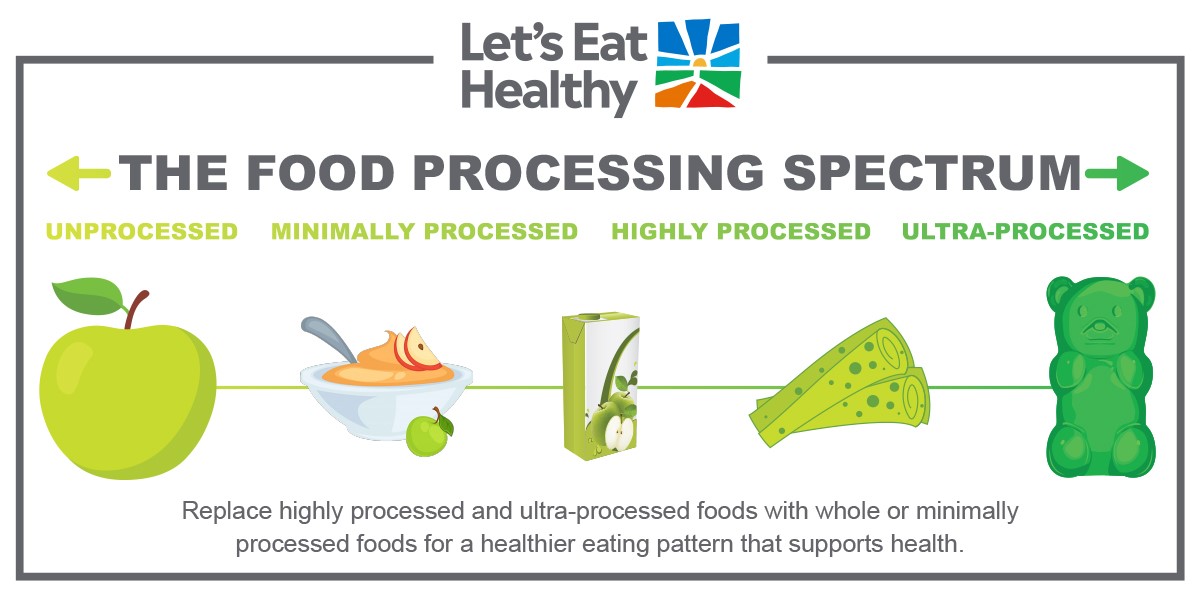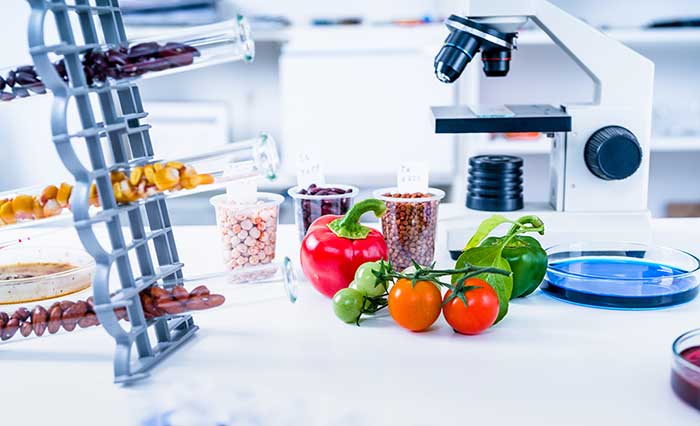By: Bessie O'Connor, RDN
Food processing plays an important role in food security and food safety. Much of the food we eat has gone through different levels of processing such as cooking, fermenting, refining and preserving. In fact, processing foods is essential to how we live today, helping to extend the life of many foods we consume so that they can be enjoyed beyond their season. While processing in and of itself is not bad, how a food is processed is key to determining its overall quality and healthfulness, as a food’s health benefits can be increased, improved or decreased based on how it is processed.
When considering processed foods, the terms unprocessed, minimally processed, highly processed and ultra-processed are often used to identify where foods fall on a food-processing spectrum. Whole foods like apples that can be found in nature fall on the unprocessed end of the spectrum, while foods such as fruit flavored gummy snacks fall on the highly processed end of the spectrum.

When a food is in its natural state, the nutrients are contained within a complex structure that provides the greatest health benefit. An orange, a glass of 100% orange juice and a sugar-sweetened orange drink may all provide vitamin C, but the orange is a more favorable option because it is in its natural state and contains fiber, which promotes gut health, regulates hunger and lowers risk of heart disease. The sugar-sweetened orange drink is considered the least favorable option because it is the most processed option, containing added sugar, artificial colors and artificial flavors that do not offer any health benefits.
Many nutrient-dense foods listed above can be canned or frozen to extend their shelf life and prevent food waste. An example are canned and frozen fruits and vegetables which are often picked at the peak of the season and are great, nutritious options. Frozen whole grains, like brown rice, and canned beans and lentils are also nutrient-dense and provide added convenience and accessibility. Some canned and frozen foods may have added sugar or salt, so it’s important to look at the ingredient and nutrition fact label when shopping.
While dietary recommendations recognize eating whole and minimally processed foods is important to build healthy dietary patterns, a variety of foods with varying degrees of processing can fit into healthy dietary patterns. Including minimally processed foods, which are still nutrient dense, can provide important nutrients while expanding food choices. This allows for inclusion of a broader variety of foods to meet personal preferences and enjoyment while also improving overall diet quality and ensuring adequate intakes of nutrients.
Daily food choices can be influenced by many factors, including culture, taste, cost and convenience. The foods you eat regularly over time have more impact on health than what you might eat during a single meal, which is why building healthy eating patterns is so important. Finding realistic ways to replace highly or ultra-processed foods with whole or minimally processed foods, we can improve dietary habits and create a healthier eating pattern one swap at a time. Explore more nutrition topics at HealthyEating.org/Nutrition-Topics.

Bessie O'Connor, RDN
Bessie O'Connor, RDN
Bessie is a practicing Registered Dietitian Nutritionist and the Community Nutrition Adviser for California’s Central Coast region.
Mealtime is not the only time to make healthy choices. Snacking is another opportunity by choosing minimally processed foods with valuable nutrients.

Technology + innovation are an integral part of the modern food industry. Innovative food products are convenient + add variety to eating patterns.

Subscribe to our blog to stay up to date on the latest news, products, and more.